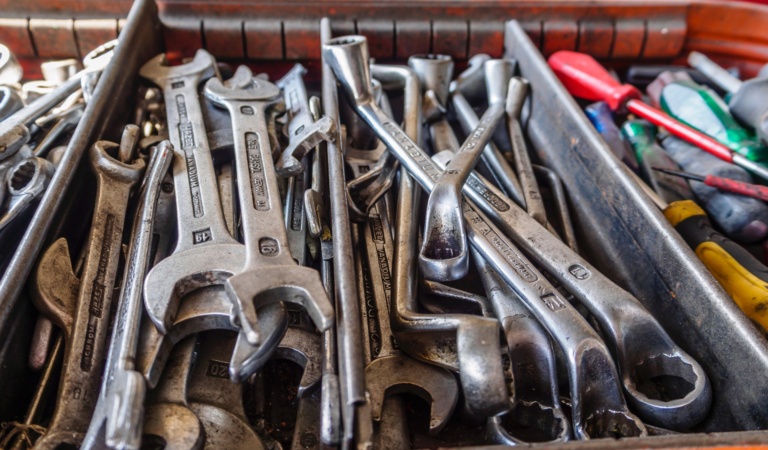 15th September 2022
15th September 2022Water Tank Repair or Replace?
Those residing in more remote regions without a mains water supply may be more dependent on cold water storage tanks for drinking water as well as other home needs.
Not only that but many businesses in different industries – industrial, commercial, hospitality, leisure – can be reliant on cold water storage tanks. For potable water, their water hygiene systems, and other water systems they have.
Since water is being used in homes or for essential needs, it must be pure and free of any impurities.
So then, how can you maximise the use of your current water tank and the water content? And when should you think about getting a new tank? Read this blog for some useful advice.
Water Tank Damage
When your water storage tank shows any indications of damage, it might be concerning and make you wonder whether you actually need a replacement instead of a simple repair. Water tank damage is guaranteed to make anyone panic and worry about these things.
However, not all tank damage means that you need an immediate replacement. In fact, quite a few water tank issues can be fixed if they’re spotted early on. (And, really, they should be spotted quite early on as your tank should be undergoing regular routine checks.)
Pipes, Pump & Filter Maintenance
Piping of water tanks can sometimes shift due to the high water pressure which can result in leaks. Since this increases the pressure in your tank, it is quite the cause for concern as added pressure can really put the stability of the tank in jeopardy.
A simple approach to prevent this from happening at all is to ensure that the pipes are all installed properly. You can keep up with the condition of the pipes by holding routine inspections.
You should also inspect the pump and filter cartridge periodically, replacing the filter cartridge at least once every year – pump covers can be used to assist in keeping the pump clean and reducing motor noise.
Faulty pumps or filter cartridges won’t require the whole water tank to need replacing, if anything it’s just the parts that would be replaced.
Wear, Tear & Leaks
Water tanks’ walls and joints are under immense amounts of pressure from the pure mass of the liquid that is being stored.
This pressure accumulates over time and can have a serious affect on the lifespan of the tank because of wear and tear. Something that, as a result, can lead to some very serious problems like corrosion.
Not just corrosion, either, but cracks and leaks, too, which spread bacteria and foreign materials into the water, leading it to become contaminated. A leak allows foreign elements to enter the tank and whilst simultaneously allowing water to escape.
If any of these problems, wear and tear or leaks and cracks, are paid no attention to they can just worsen over time. In the early days of such issues, there are solutions to help prevent them of simply fix them. Once they limit your water tank from functioning efficiently or holding, clean potable water, it may be time to think about a replacement instead.
When Damage is Serious
Depending on the material used or environment they are located in, different types of tanks will encounter different issues.
For instance, steel tanks may be quite durable – incredibly so, actually – but that doesn’t stop the corrosion process. Even more so when these material tanks are exposed to saline air. The right decision can be made if these problems are thought out in advance.
Returning to the steel tank example, increasing its lifespan by using a layer of coating to provide additional protection is one potential solutional method. Similarly, a quick drain, rinse, and refill can solve issues of built up sand and dirt that will accumulate due to the coastal environment.
Furthermore, when exposed to saltwater or acidy compounds, concrete tanks are equally prone to corrosion.
Any tank made using metallic materials may become distorted or sometimes partially melted as a result of fire damage. In this case particularly, you would require a complete tank replacement. A tank in which the shape has been disjointed will not be stable enough to perform or function efficiently nor would it be safe to be around. They have the potential to collapse from where they stand.
Concrete tanks would be largely unharmed by fires. Perhaps any inner metal components could face some damage, depending on how protective the concrete is.
Severe corrosion also requires a replacement. Rust is a metal eater, really, so the tank will be essentially irreparable.
How Can Cold Water Storage Help?
When initial tank coatings don’t have a protective metal substrate, they will be more prone to corrosion. Tanks are susceptible to bacterial development, too, in addition to rusting. For that, Cold Water Storage has two primary remedies.
A long-lasting coating technique that is strong and dependable in one of them. After the tank has been prepared properly, our crew installs a lined system (WRAS approved, by the way). Then, a galvanised steel water tank is the result.
Future bacterial development and rusting are prevented. Just like that. And it comes with a 10 year guarantee!
Our other option is a tank replacement. Cold Water Storage can provide and install a GRP (Glass Reinforced Plastic) water tank, made in accordance with British standards.
Contact Us
Within the water hygiene industry, Cold Water Storage has 30 years of experience.
We don’t just install GRP cold water tanks; we reline and replace them.
Contact the team if you have any questions or concerns – call 01943 872 311 or send an email to info@coldwaterstorage.co.uk to reach us! We’ll be in touch with you ASAP!